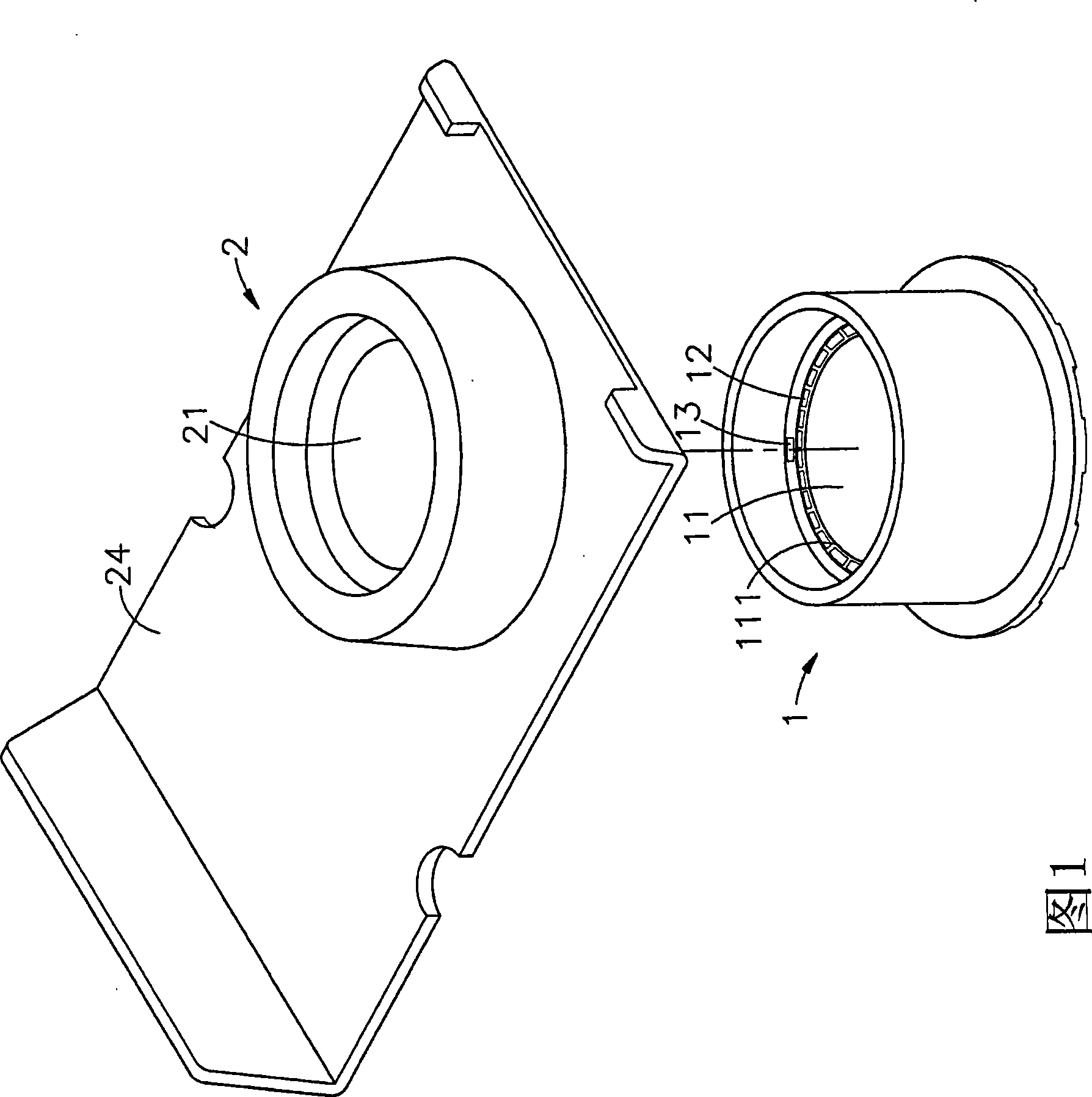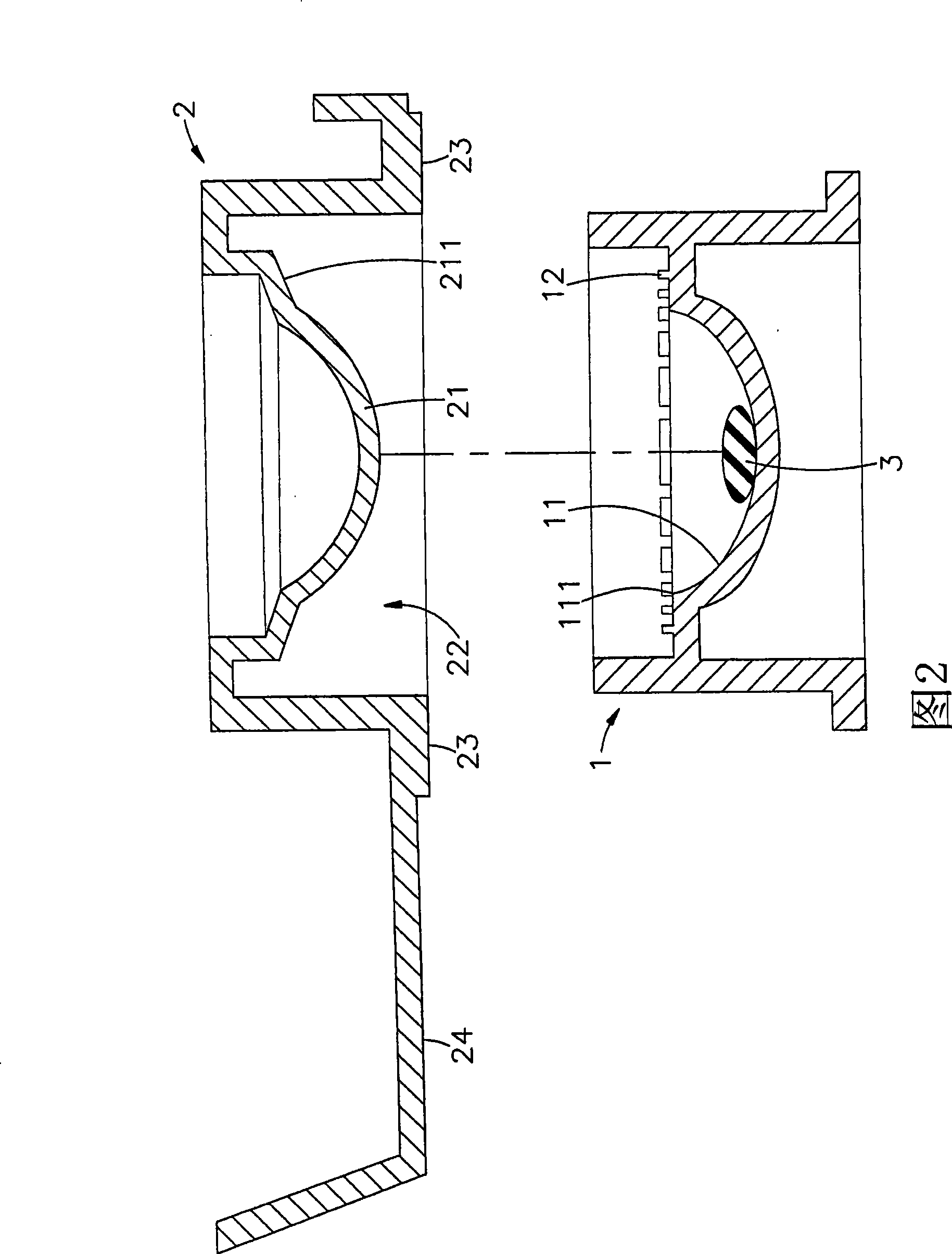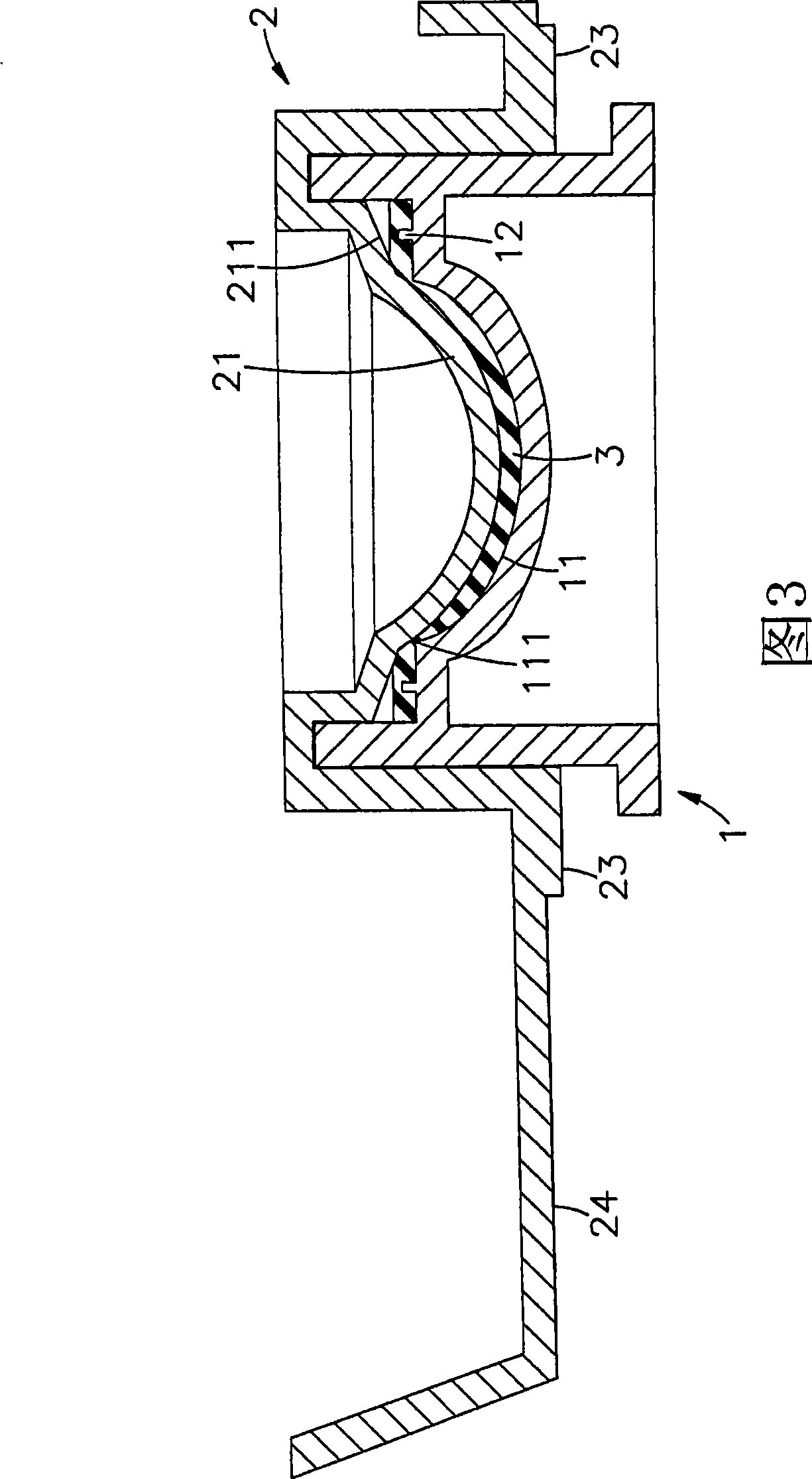Contact lens molding method and mould
A technology of contact lenses and molding methods, which is applied to household appliances, types of packaging items, and other household appliances, and can solve problems such as cumbersome processing steps, long processing time, and difficult manufacturing processes
- Summary
- Abstract
- Description
- Claims
- Application Information
AI Technical Summary
Problems solved by technology
Method used
Image
Examples
Embodiment Construction
[0053] In order to achieve the above purpose and effect, the technical means and structure adopted by the present invention will be described in detail with reference to the accompanying drawings for the preferred embodiments of the present invention. Its features and functions are as follows for complete understanding.
[0054] Please refer to shown in Fig. 1, 2, 3, it is three-dimensional exploded view, side view disassembled sectional view, side view sectional view of the present invention, can clearly find out by shown in the figure, the forming method and mold of contact lens of the present invention, It includes a mold 1 and an auxiliary device 2, wherein:
[0055] The inside of the mold 1 is concavely provided with a mold cavity 11, and the mold cavity 11 is in the shape of an arc surface, and a sharp corner-cutting edge 111 is formed on the outer periphery of the top, and on the periphery of the corner-cutting edge 111, the ring is provided with A plurality of micro-pr...
PUM
 Login to View More
Login to View More Abstract
Description
Claims
Application Information
 Login to View More
Login to View More - R&D
- Intellectual Property
- Life Sciences
- Materials
- Tech Scout
- Unparalleled Data Quality
- Higher Quality Content
- 60% Fewer Hallucinations
Browse by: Latest US Patents, China's latest patents, Technical Efficacy Thesaurus, Application Domain, Technology Topic, Popular Technical Reports.
© 2025 PatSnap. All rights reserved.Legal|Privacy policy|Modern Slavery Act Transparency Statement|Sitemap|About US| Contact US: help@patsnap.com



